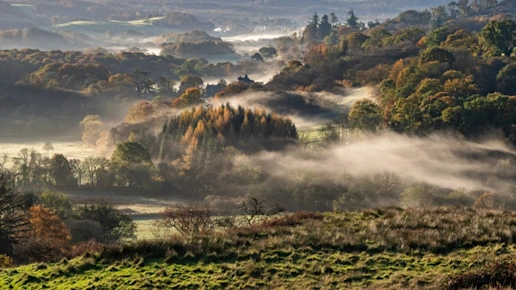Robert Burns in Dumfries: Follow in Scotland's Bard’s Footsteps
Posted on 13-10-25, updated on 22-10-25By: Claire S. | 6 minute read

Discover the lasting legacy of Robert Burns, Scotland’s national poet, in the historic market town of Dumfries. Known as the Bard of Ayrshire, Burns spent his final years here, leaving behind a rich cultural imprint that still draws visitors from around the world. The Burns heritage trail offers an inspiring journey through landmarks such as his former home, favourite taverns, and the mausoleum where he rests. This guide invites you to visit Dumfries, Scotland, and explore the places that shaped Burns’s later life and greatest works. Whether you’re tracing his poetic footsteps or simply soaking up the charm of the region, you’ll find plenty to enjoy.
Stay nearby in one of our many holiday cottages in Scotland, or choose a cottage in Dumfries and Galloway for an unforgettable escape steeped in literary history.
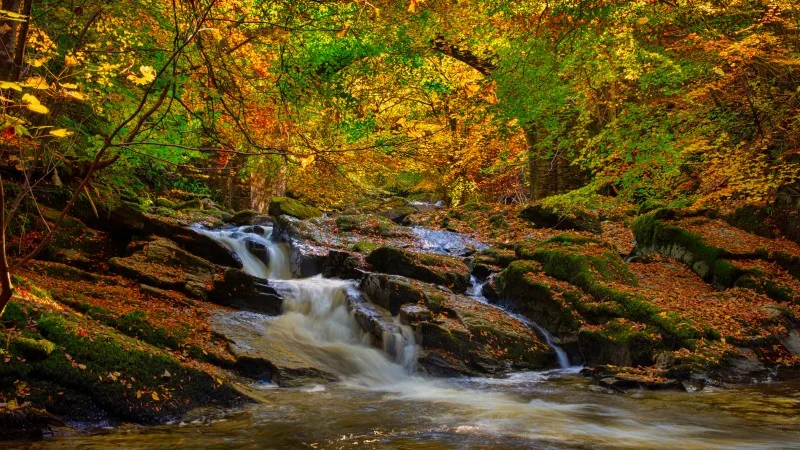
Why Did Robert Burns Settle in Dumfries?
In 1791, Robert Burns moved to Dumfries seeking a more stable life for himself and his growing family. After years of struggling to balance farming with his poetic ambitions, Burns accepted a position with the Excise Service, providing a steady income and security. This new chapter marked a turning point in Robert Burns’ history, a transition from rural labour to life as a respected, though often scrutinised, civil servant. Dumfries, a bustling market town with strong cultural ties, offered both opportunity and community for Scotland’s national poet.
The Robert Burns Dumfries years were filled with both creativity and challenge. While his health began to decline due to long hours and the toll of earlier hardships, Burns continued to produce some of his most enduring works. He also moved into what would become known as Burns’ final home, now a beautifully preserved museum dedicated to his memory.
What was life like for Burns in Dumfries?
Life in Dumfries provided Burns with both comfort and companionship. He lived with his wife Jean Armour and their children in a modest yet lively household, often entertaining friends, writers, and thinkers. Burns was a familiar face in the town’s taverns, where he engaged in spirited debate and drew inspiration for his verse. Despite declining health, his creativity flourished, it was here he wrote “A Man’s a Man for A’ That”, a timeless anthem celebrating equality and human dignity.
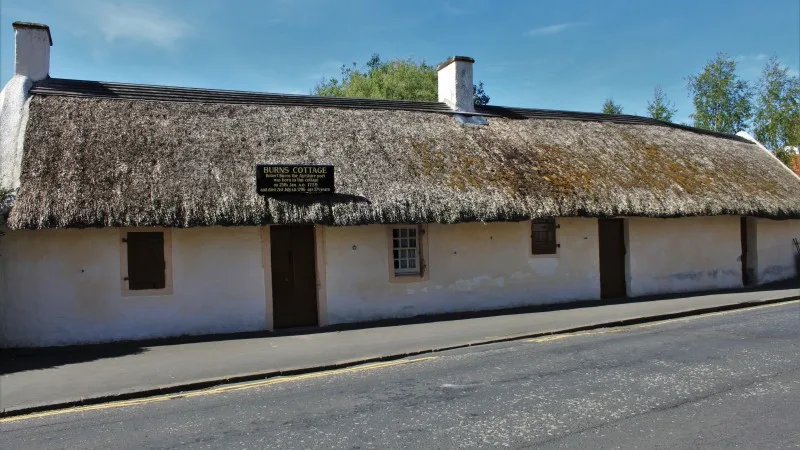
Can You Visit Robert Burns’ House Today?
Yes, visitors to Dumfries can step directly into the world of Scotland’s greatest poet at the Robert Burns House Dumfries, a remarkable time capsule of the Bard’s final years. Located on Burns Street, this humble sandstone home is where Burns lived with his wife Jean Armour and their children until his death in 1796. Today, it’s preserved as the Burns House Museum, offering a deeply personal glimpse into the man behind the legend.
When you visit Burns’ home, you’ll find that much of its original character remains intact. From the narrow stairway to the modest rooms, every corner speaks to Burns’ everyday life, from family moments to the hours he spent writing some of his most heartfelt works. This is also the place where Burns’ health declined, lending the site a poignant atmosphere that draws visitors from across the world.
What can you expect inside the museum?
Inside the museum, guests can explore an intimate collection of artefacts that connect directly to Burns’ life and legacy. The centrepiece is Burns’ original writing desk, where he composed letters and verses during his Dumfries years. You’ll also find handwritten manuscripts, personal belongings, and domestic artefacts that bring his world vividly to life. Exhibits include period furniture, household items, and mementoes that offer insight into his creativity and family life. The Burns House Museum is more than a historic site, it’s a heartfelt tribute to a poet whose words continue to inspire generations.
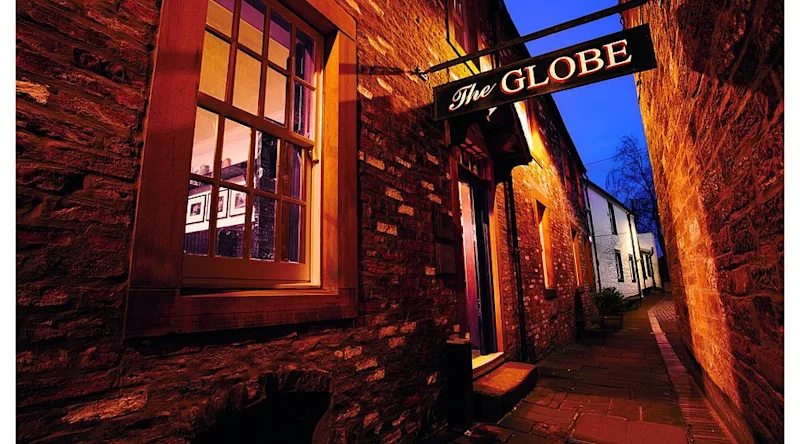
Where Did Burns Enjoy a Pint? Discover the Globe Inn
When exploring Burns pubs in Dumfries, none are more iconic than the Globe Inn Dumfries, fondly remembered as Robert Burns’ favourite inn. Established in 1610, the Globe has been serving locals and travellers for over four centuries, making it one of Scotland’s oldest public houses. During his Dumfries years, Burns became a regular visitor, enjoying lively company, conversation, and, of course, a dram or two of whisky.
The inn still stands proudly on the High Street, and visitors today can step into the very rooms where Burns once recited verses and etched his thoughts into the windowpanes. These pieces of Burns graffiti, carved lines of poetry and witty remarks, remain carefully preserved, along with 18th-century furniture, portraits, and manuscripts that capture the spirit of the era. The Globe Inn is not just a pub; it’s a living museum of Scottish literary history.
Can you dine or drink there today?
Absolutely. The Globe continues to welcome guests, offering the rare pleasure of dining and drinking in a setting steeped in Burns’ legacy. Visitors can enjoy a hearty meal or a fine Scottish whisky in one of the poet’s favourite haunts, surrounded by the warmth of candlelight and centuries of stories. Guided tours of the Burns Room reveal fascinating artefacts, while regular literary-themed evenings celebrate the Bard’s enduring influence. For lovers of history and poetry, a visit to the Globe Inn is an unmissable part of any Burns-inspired trip to Dumfries.
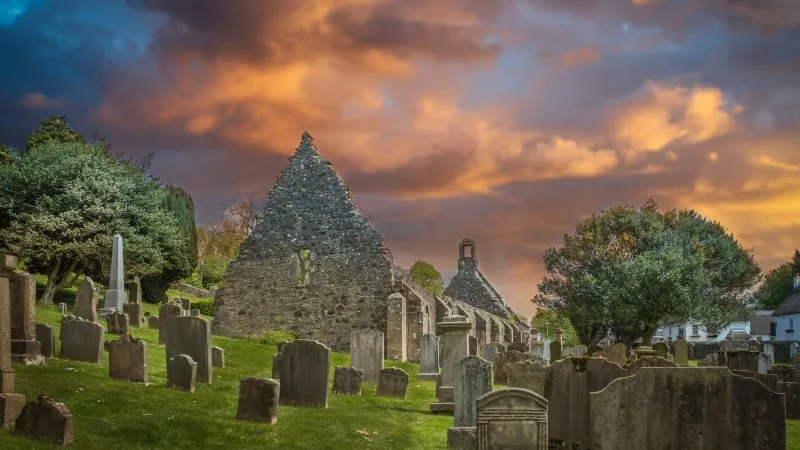
Where Is Robert Burns Buried in Dumfries?
The final resting place of Scotland’s national poet can be found at St Michael’s Church Dumfries, a peaceful and historic site that continues to attract visitors from around the world. Robert Burns’ grave lies within the churchyard, where he was first buried in 1796 in a modest plot. Nearly two decades later, in 1815, his remains were moved to the more fitting Burns Mausoleum, a grand white-stone monument built to honour his enduring legacy.
The mausoleum stands as a powerful tribute to Burns’ impact on Scottish culture and identity. Its elegant domed design and sculpted figures symbolise both his poetic genius and his humanity. For admirers of Burns’ work, standing before the mausoleum is a moving experience, a moment to reflect on his extraordinary life and lasting contribution to literature. The site remains one of the most visited landmarks in Dumfries, drawing literary pilgrims and history lovers alike.
Is the grave easy to find?
Yes. The Burns Mausoleum is easy to locate within St Michael’s Churchyard, just a short walk from Dumfries town centre. Visitors can enter through the church gates and follow signs leading directly to the ornate monument. Inside, you’ll find inscriptions commemorating both Robert Burns and his beloved wife, Jean Armour, who was later laid to rest beside him. The site is beautifully maintained, offering a quiet and respectful space to pay tribute to Scotland’s Bard, a must-see stop for anyone tracing the Burns heritage trail through Dumfries.

What Other Burns Landmarks Can You Explore in Dumfries?
Beyond the famous Burns House and Globe Inn, Dumfries offers an array of fascinating sites that celebrate the poet’s life and legacy. A Burns walking tour Dumfries is the perfect way to experience the town as Burns himself once did, on foot, surrounded by the streets and landmarks that shaped his final years.
Start your Robert Burns trail at the Burns Statue on Dumfries High Street, an impressive bronze figure unveiled in 1882. It depicts the poet in thoughtful repose, looking toward the countryside that so often inspired him. From there, head to the Midsteeple, a grand 18th-century building where Burns attended public meetings and mingled with local dignitaries during his time as an Excise officer.
Continue your walk to The White Sands, a riverside area where markets were held and Burns frequently crossed paths with townsfolk and friends. This lively spot captures the social side of Dumfries that Burns loved, a place where conversation, commerce, and inspiration flowed freely.
A short stroll away lies Burns Street, named in his honour and home to his preserved residence, now the Burns House Museum. As you wander, look out for local plaques and heritage signs marking sites connected to the poet’s life and his contemporaries.
This Burns landmarks Scotland trail can easily be completed in around two hours, depending on how long you linger at each stop. It’s a rewarding way to blend history, culture, and gentle exploration, allowing visitors to walk in the Bard’s footsteps while discovering the charm of Dumfries at their own pace.
Step into Burns’ World in Dumfries
A Robert Burns Dumfries visit offers the chance to walk in the footsteps of Scotland’s greatest poet and experience the places that shaped his final years. From his cherished home and favourite tavern to his grand resting place at St Michael’s Churchyard, each stop reveals a new layer of Burns history. Whether joining one of the many Dumfries walking tours or exploring independently, visitors can uncover the warmth, wit, and humanity that defined the Bard. Discover the spirit of Robert Burns in every cobbled street and corner of this poetic town.












